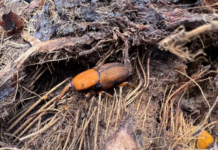There’s no perfect way to farm. Instead, farmers adjust to local weather conditions and soil composition, learning what works best for their area through trial and error. Soil preparation is one of the most essential parts of producing a healthy crop, and tilling is a large part of this process.
However, as farmers have learned more about soil health and sustainable agriculture, the advantages of tilling have come into question. Here are 10 things you should consider before choosing a tillage method for your fields.
1. Farming Goals
Tillage and no-till systems have pros and cons, but each method is suited for reaching specific goals. For instance, tilling your land will mix nutrients into the soil for a faster yield. However, no-till practices are healthier for your soil long term. Some farmers combine these systems by initially breaking up the ground and then adopting no-till methods.
2. Soil Compaction
Compacted soil negatively affects crops by limiting their access to nutrients and stunting root and plant development. Although it may seem counterintuitive, breaking up your ground with a till can actually lead to soil compaction over time. Farmers who choose not to till can incorporate air into their soil through more natural means like cover crops and earthworms.
3. Soil Structure
Soil with a heavy percentage of clay may need to be tilled to give plants a chance to thrive. However, tilling breaks up topsoil in naturally aerated soil. This structure is composed of layers of sediment and protects nutrient-dense organic matter from being broken down quickly by surface bacteria.
4. Moisture Retention
Intact soil structure is one of the ways the ground retains moisture. Tilling impacts moisture retention by disrupting this structure and drying out the land’s top layers. This increases runoff, making it more challenging to water plants well and increasing irrigation expenses over time.
5. Nutrient Levels
Another effect of disrupting soil’s natural layers is a loss of nutrients. They present in organic matter, nourish and develop crops as they grow, and make food taste good. Topsoil erosion has become a huge problem for the agriculture industry, and opting not to till is one way to preserve these nutrients.
6. Cover Crops
Farmers worried about soil amendment can use winter cover crops as an alternative to spring tilling. They replenish nutrients in the soil and naturally aerate the ground with their root systems. When these plants decompose, they add even more nutrients to the earth, leading to a more bountiful harvest.
7. Crop Rotation
Another way to naturally amend your soil is through crop rotation. Many farmers rotate crops, whether or not they choose to till, to control disease and replenish the ground with vital nutrients for the next growing season. Crop rotation can be difficult for working farms to practice, but it leads to long-term soil health.
8. Weed Spread
Many farmers like tilling because it helps break down weeds and plant matter from the previous year. However, others claim it spreads weeds by disturbing seeds and redistributing them aboveground. There are many other ways to control weeds, such as using mulch or growing cover crops.
9. Yield Goals
Although opting for no-till will improve the health and productivity of your farm for the long term, it might not meet your immediate yield goal. Even with aggressive mulching and fertilizing, skipping the tilling stage could impact your yield for several years. Of course, this depends on the overall health of your soil to begin with.
10. Time and Effort
Any farming process takes significant time and effort. An important question to ask yourself is how much work you’re willing to put in and when you have the most time to invest in your crops and soil health. If you opt for no-till, you’ll likely need to do more in the fall.
To Till or Not to Till
Tilling can significantly impact the health of your soil and your farm’s productivity. However, if your soil has been tilled for many years, it will take time for topsoil to build up and benefit your crops, even with the help of natural fertilizers.
Whether or not you choose to till is a personal decision, based on your goals as a farmer. However, investing in your soil’s health through natural fertilizers, cover crops, and aeration is essential for healthy land and a bountiful harvest.
Bio: Jane is an agriculture and environmental journalist and the founder and editor-in-chief of Environment.co, where she covers sustainability and eco-friendly living.









You can consider Sustainable Agriculture Standards (SAS) as guideline for sustainable farming,
you can get the details at http://www.sasmark.com . SAS also run training programs through its certification agencies around the world.
Comments are closed.